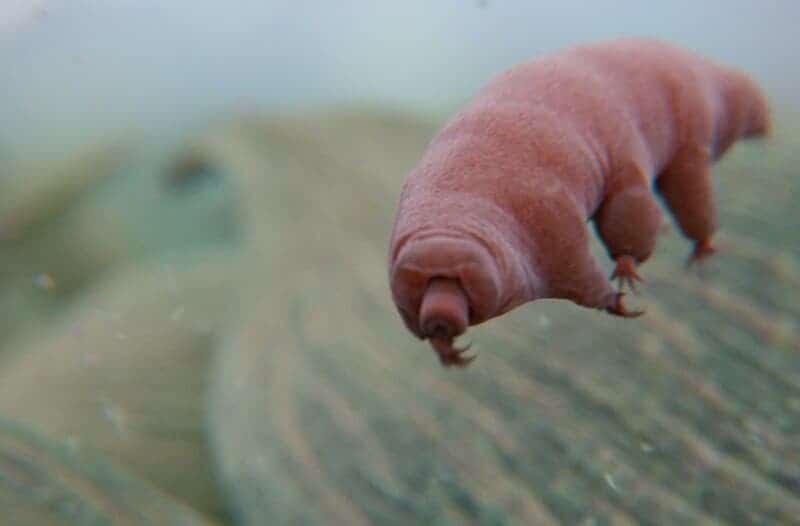If you’d bet on a life form to survive an apocalypse, tardigrades would be a good bet. Tardigrades, these adorable little water bears, are some of the toughest creatures out there. They can withstand high temperatures, low temperatures, extreme chemistry, impacts, food scarcity, they can even withstand the void of space — and did I mention that they can stop their metabolism and survive without food and water for decades?
Yeah, tardigrades are tough. But are they tough enough to be fired from a gun and survive? Alejandra Traspas and Mark Burchell, two researchers at Kent University in the UK, asked themselves that bizarre question. It’s not just for the sake of building a tardigrade-shooting gun (as interesting as that may sound), nor because they wanted to see if they could splat some tough tardigrades.
The question of whether tardigrades can survive such an impact has implications for our exploration of space and our understanding of how creatures can travel in the solar system.

The idea that life came to Earth from somewhere else is definitely an exciting one. The problem with it is that there’s no real evidence to say this happened. In fact, it’s not even clear if it could have happened — as in, if life could be strong enough to survive meteorites or whatever other celestial body that would bring it crashing down to Earth.
We don’t even know if life could survive a trip in our solar system. You see, rocks get flung into space all the time. When an asteroid smashes into the Earth (or Mars, or the moon), the impact can blast some debris all the way out into space. This debris then floats about, and if the conditions are just right, it can hitch a ride pretty far away. For instance, debris from Earth could realistically reach the moon. But could this debris also carry microorganisms with it?
You wouldn’t really bet on microbes to survive such a trip, because the pressure of the impact is simply too large for them. But tardigrades are a different problem. Tardigrades have a realistic chance of surviving some cosmic impacts, and even more, tardigrades could be brought along accidentally to missions on Mars or Europa.
So how do you test if tardigrades could have survived such an impact? Well you would calculate the speed and impact and then subject the poor creatures to that type of impact.
So they did.

The authors note that they handled the tardigrades “according to the ethical rules for invertebrates with the consent of the departmental ethics officer”. They fed them mineral water and moss and then loaded them into a gun and fired them at sand targets in a vacuum chamber (at different speeds).
The results varied substantially based on speed. At lower speeds, the tardigrades were just dazed and shocked, but at higher speeds, they were splattered. Researchers calculated that tardigrades can’t survive speeds higher than 0.9 km/s (0.56 mph), but they have a chance to survive impacts at lower speeds. To get an idea of what that means, it’s about 2-3 times faster than the speed of a passenger jet, and comparable to the speed of the fastest military planes.
So what does this mean for the solar system? Well, it’s unlikely that tardigrades could have hitched a ride to Earth from Mars or another planet — just 1 in 1000 survived impact comparable to what you’d expect when ejecta hits Earth. Even the tardigrades that did survive needed up to 36 hours to recover from the internal damage.
“It is likely that arrival of a tardigrade on Earth, for example by way of a meteorite impact, is not likely to be a viable means of a successful transfer even for such hardy organisms. There are other places in the Solar System, however, where biological material, during transfer, would encounter low shock pressures,” the researchers write in the article.
But what about elsewhere in the solar system? Where things are closer to each other, like a planet and its moon, the tardigrades just might have a chance. Earth rocks that hit the moon come at a speed where tardigrades have about a 40% chance of survival — quite significant. Something similar would be true for Mars and its moons, Phobos and Deimos; fewer tardigrades would be able to survive, but it’s still a significant percentage.
Does that mean there are already tardigrades on the moon? Well, the study didn’t look into this, but it’s a chance we can’t completely rule out. However, even if tardigrades do survive the initial impact, it’s not clear how they could survive an environment like the moon. They could enter their dormant state perhaps, but that’s pretty much it.
The study is also important for our exploration of ice worlds like Jupiter’s moon Europa or Saturn’s moon Enceladus, two frozen worlds thought to have liquid water under the frozen surface. In 2015, the Cassini orbiter grabbed some samples from of the plumes erupted by Enceladus, but in doing so, it passed through the plumes at a speed of 5 km/s — fast enough to destroy tardigrades and any potential life that may have been caught in the plume. We don’t know if such life exists, but even if it did, it would have been splattered.
The researchers say this could be avoided by some careful planning and some soft, light aerogel to cushion the sample collector. This bit of planning could help potential microscopic lifeforms survive such an experience.
Of course, one question still remains: even if tardigrades survive the experience, are they still fully functional? As in, can they reproduce after it? Well, Traspas and Burchell plan to answer that question in the near future, as they let some of the survivors meet up.

The study was published in Astrobiology.


